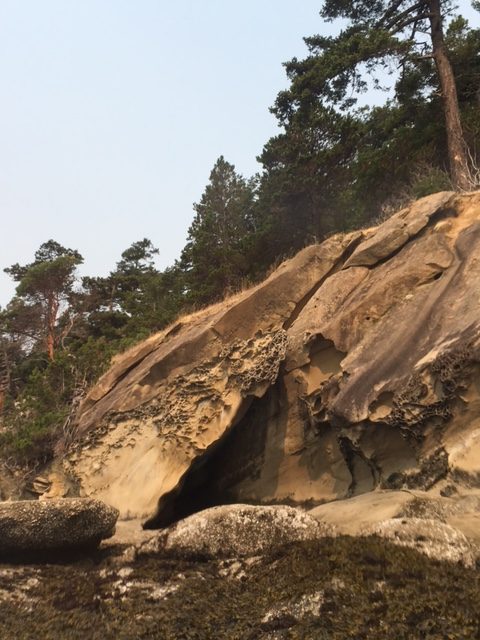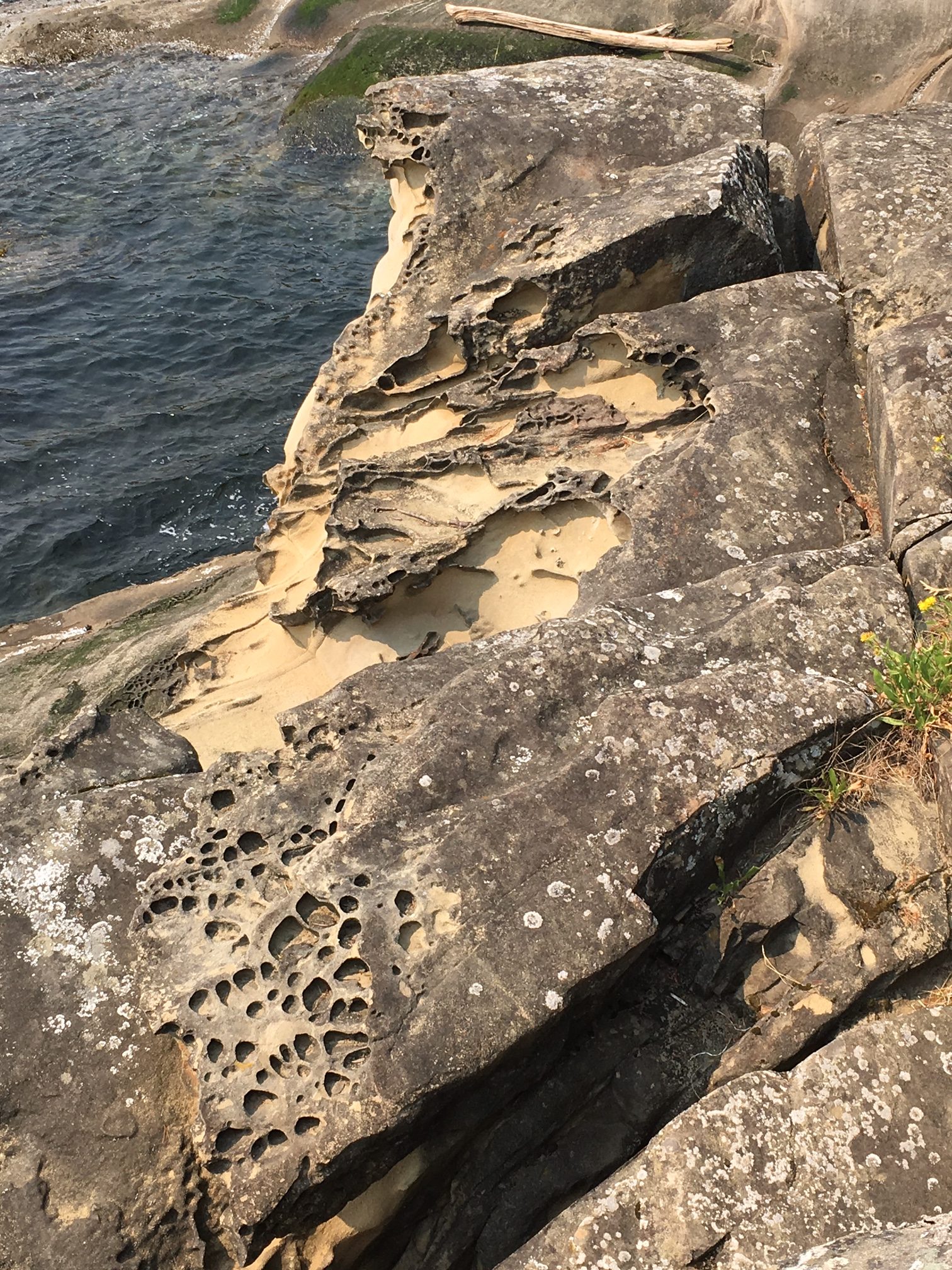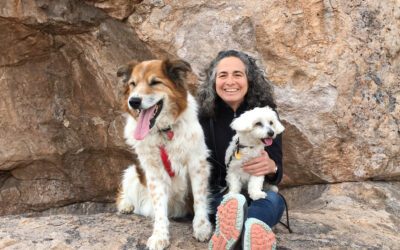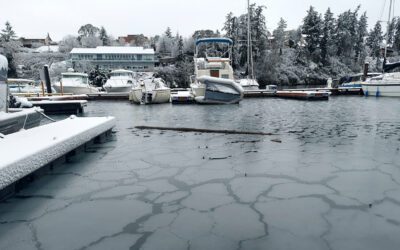In the San Juan Islands of Washington state, there are many lovely anchorages to drop a hook. Some would say Sucia Island is one of the loveliest. Part of a three-island marine state park, it has trails, campsites, mooring buoys, and anchoring room galore. It’s also a great playground for a geologist.
The horseshoe shape of the island tells part of its geologic history; sedimentary strata, which were originally flat-lying, underwent tectonic compression shaping first a syncline (a big U-shaped fold), then further compressive forces tilted it forming what geologists call a plunging syncline, and what sailors call the big, beautiful anchorage of Echo Bay.
.
But it’s the striking sculpted sandstone cliffs that draw so many to Sucia. The “carving” that looks like intricate modern art is known as honeycomb weathering, for obvious reasons. Three specific conditions are needed for this type of weathering to occur: soluble salt, as in seawater; porous rock, like the Chuckanut Sandstone which comprises most of the bedrock on Sucia Island; and alternating cycles of wetting and drying, as in tides flooding and ebbing.
 The Chuckanut Formation sediments were deposited by a meandering river 50 million years ago. There were several depositional environments along the river, including braided streams, point bars, and oxbow lakes, resulting in numerous rock types within the formation – conglomerates to sandstones to siltstones.
The Chuckanut Formation sediments were deposited by a meandering river 50 million years ago. There were several depositional environments along the river, including braided streams, point bars, and oxbow lakes, resulting in numerous rock types within the formation – conglomerates to sandstones to siltstones.
To create the intricate weathering pattern, seawater is absorbed into the porous sandstone, then evaporation causes expanding salt crystals to wedge sand grains apart. As cavities develop, microscopic algae find a sheltered environment in which they can thrive on the walls of the cavities. The coating of algae slows weathering on the side walls, so the divots deepen, making the honeycombs more and more dramatic. Understanding how these sculpted sandstones form, makes me appreciate their beauty all the more.
.

Showing signs of weathering myself, I can’t resist the metaphor of time and erosion sculpting us into more beautiful shapes than we were before.
What metaphors resonate for you?
Notes:
- To learn more about the geology of Sucia Island, there’s a short paper, “Sucia Island, The Geologic Story” by George Mustoe of Western Washington University (April 2008) that’s very informative.
- Special thanks to Judi Pringle for kayaking Sucia Island with me, where I took the pictures for this post.




Thank you, Deb. The visual of the colorfully twisted scarves was most informative!
Deb- I loved the one on the island! I used to teach at Western Washington University which sits on the Chukanut Formation! Fun! Enjoy the boat! I led a tour for the Smithsonian from Vancouver to Juneau three weeks ago – nice weather a super group. Hope to see you in San Francisco and invite you to come to Portland for your Jahns lectureship!
Cheers, Scott
More photographs, please!
Howard
Great, really makes you think.
I’m excited to share your explanation of honeycomb weathering with my S. Oregon Coast explorer friends. The Sandstone in the Coaledo Formation weathers like this too!
Thanks for the honorable mention. I enjoyed the paddle and got to hear about the geology first hand! Always a pleasure Deb!
Hey Deb … Interesting to hear about the process for creating honeycomb weathering in this unit. For sure each of us “wears the time” as it passes to some degree, and some “weather” better than others. I might not be more beautiful, but sculpting happens!
The kayak run must have been wonderful with all that fab geology around. Let’s hear it for tectonic compression! Loved the towel plunging syncline model.
CheerZ,
-g-
Very interesting website and photos. Congratulations on being selected as the 2018-2019 Richard H. Jahns Distinguished Lecturer in Applied Geology.
G.T. Farrand, CA-CEG
Very interesting short article on Socia Island formations. Th e process you describe and the resulting honeycomb make me wonder if the same process is responsible for the formations in Leslie Gulch, OR. I know the lichen on the volcanic tuff hardens the shell of the rocks but there has not bee any salt water there since their deposit about 12,000,000 years ago, I believe. It’s a desert now but it likely experienced very wet periods from the ice ages. Could salts in the rock substitute for the salt in sea water?